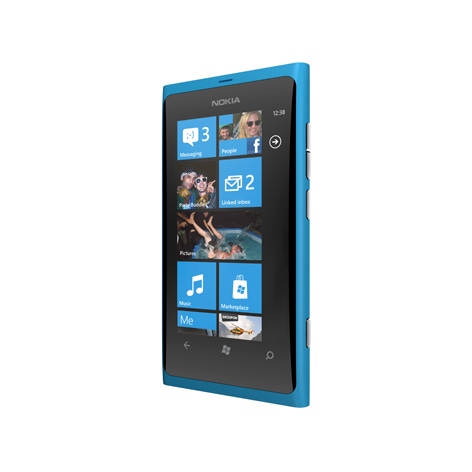Finnish handset giant Nokia has unveiled its first Windows Phone devices, with a smartphone targeted at the upper market segment and a more affordable model for the masses.
October 26, 2011

Finnish handset giant Nokia has unveiled its first Windows Phone devices, with a smartphone targeted at the upper market segment and a more affordable model for the masses.
Speaking at Nokia World in London on Wednesday, CEO Stephen Elop, introduced the Lumia 800, with one-touch social network access and Internet Explorer 9. It features a 3.7 inch AMOLED curved display, 1.4 GHz processor, HD video playback, 16GB of internal user memory and 25GB of free SkyDrive storage. The Lumia 800 will be available for €420 in the next month across France, Germany, Italy, the Netherlands, Spain and the UK. It is scheduled to be available in Hong Kong, India, Russia, Singapore and Taiwan before the end of the year, and in further markets in early 2012.
The Lumia 710 with exchangeable back covers, also sports instant social and image sharing as well as IE9. It will retail for around €270 and will be available first in Hong Kong, India, Russia, Singapore and Taiwan, before becoming available in further markets in early 2012.
Both devices include Nokia Drive, a personal navigation application with free, turn-by-turn navigation and dedicated in-car-user-interface, as well as MixRadio, a free music-streaming application.
Keeping its Symbian offerings alive, Nokia released four S40 devices, the Asha 300, Asha 303, Asha 200 and Asha 201, with a mixture of QWERTY and touch screen experiences, dual SIM and a sub-€100 price tag.
Elop said Nokia would introduce a portfolio of products into the US in early 2012 and into mainland China in the first half of 2012. In addition to the existing products, which include coverage for WCDMA and HSPA, Nokia also plans LTE and CDMA products to address specific local market requirements.
“Eight months ago, we shared our new strategy and today we are demonstrating clear progress of this strategy in action,” said Elop.
Ovum analyst Nick Dillon, commented on the announcements: “Having replaced its own Symbian platform with Microsoft’s, this is essentially a restart for the handset manufacturer, which has struggled to adjust to the new dynamics of the smartphone market following the launch of the iPhone in 2007. With Microsoft’s new mobile platform yet to take off and Nokia banking on Windows Phone as its primary smartphone platform, the success of the devices will be critical to the future of both companies. Both companies therefore have much riding on the outcome of this launch.
“The challenges which Nokia faces are significant – many potential Windows Phone customers will have already bought an Android or iPhone and will have some form of attachment to those platforms. They will have invested in the platforms from a services, financial (via applications) and a familiarity perspective, and as such Nokia will have a challenge to convince them to switch to what is a largely unknown, and therefore risky, alternative,” he said.
Live coverage of the Nokia World event:
About the Author(s)
You May Also Like








.png?width=300&auto=webp&quality=80&disable=upscale)


_1.jpg?width=300&auto=webp&quality=80&disable=upscale)


.png?width=800&auto=webp&quality=80&disable=upscale)